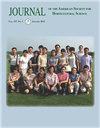关键花启动基因在山核桃中的差异表达及其对植物生长调节剂应用和交替结实的响应
IF 1.1
4区 农林科学
Q3 HORTICULTURE
Journal of the American Society for Horticultural Science
Pub Date : 2021-05-01
DOI:10.21273/JASHS04954-20
引用次数: 2
摘要
关于山核桃(Carya illinoinensis),交替结果是作物产量的两年波动,是山核桃产业的主要障碍。人们对促使山核桃枝条繁殖的内部线索知之甚少。这项为期2年的研究通过确定已知控制其他物种花启动的三个基因的山核桃同源物在生长季节的不同时间或在不同的植物组织中是否有不同的表达,来探讨山核桃交替生育的奥秘,以及与未处理的对照组相比,这些基因的表达是否可以通过植物生长调节剂(PGR)的应用来操纵。感兴趣的开花基因是叶形(CpLFY)、顶端a1(CpAP1)和开花位点t(CpFT)的山核桃同源物。在第1年(2014年),在三个组织取样日期(6月13日、7月3日和7月29日)的每一个之前1周,在地上部施用PGRs乙烯利和赤霉素GA3。在接下来的一年(2015年)中,又向研究中添加了两个PGR[赤霉素GA3和乙烯抑制剂氨基乙氧基乙烯基甘氨酸(AVG)的第二倍剂量(2X)],总共添加了四个PGR(分别于6月10日、7月1日和7月23日应用)和未经处理的对照。实验叶片和芽组织是从成熟的“西方”山核桃树上的结果枝和非结果枝上取样,并分别进行分析。CpLFY和CpAP1在芽中的归一化表达水平显著高于在叶中。根据2014年的采样日期,CpLFY在芽组织中的标准化表达存在统计学差异,最早的日期(6月13日)的表达高于当年晚的两个日期。2015年,处理×日期的相互作用表明,与未处理的对照相比,7月1日用两种赤霉素GA3剂量处理的芽中CpLFY的表达显著较低。几周后(7月23日),2X GA3处理组的CpLFY表达较低,而AVG处理的样品中CpLFY的表达较高。2014年,芽中的CpAP1表达显著,在处理×日期的相互作用中,乙烯利增加了CpAP1的表达,但仅在一个日期(7月29日)。2015年,实生芽CpAP1的表达显著高于未实生芽;然而,再一次,只有一次约会。结果表明,这些关键开花基因的差异表达基于组织类型、取样日期、枝条和PGR处理的结果状态。结果表明,有必要对PGRs的影响进行更多的研究,以了解山核桃的开花行为,减轻交替结实的强度。本文章由计算机程序翻译,如有差异,请以英文原文为准。
Differential Expression of Key Floral Initiation Genes in Response to Plant Growth Regulator Application and Alternate Bearing in Pecan
Regarding pecan (Carya illinoinensis), alternate bearing, which is a biennial fluctuation of crop yield, is a major hindrance for the pecan industry. Little is known about the internal cues that trigger pecan shoots to become reproductive. This 2-year study approached the mysteries of alternate bearing of pecan by determining whether pecan homologs of three genes known to control floral initiation in other species are expressed differently at various times of the growing season or in distinct plant tissues, and whether expression of these genes can be manipulated by plant growth regulator (PGR) application when compared with an untreated control group. The flowering genes of interest were pecan homologs of leafy (CpLFY), apetala1 (CpAP1), and flowering locus t (CpFT). During year 1 (2014), PGRs ethephon and gibberellin GA3 were applied at the shoot level 1 week before each of three tissue sampling dates (13 June, 3 July, 29 July). During the following year (2015), two more PGRs were added to the study [a second double rate (2X) of gibberellin GA3 and ethylene inhibitor aminoethoxyvinylglycine (AVG)] for a total of four PGRs (applied on 10 June, 1 July, and 23 July) plus the untreated control. Experimental leaf and bud tissues were sampled from fruiting and nonfruiting shoots on mature ‘Western’ pecan trees and analyzed separately. Normalized expression levels of CpLFY and CpAP1 were significantly higher in buds than in leaves. Normalized expression of CpLFY in bud tissues differed statistically based on the sampling date in 2014, with the earliest date (13 June) having higher expression than the two later dates that year. In 2015, a treatment × date interaction revealed that, compared with the untreated control, CpLFY expression was significantly lower in shoots treated with both gibberellin GA3 dosages on 1 July. A few weeks later (23 July), CpLFY expression was lower in the 2X GA3 treatment group and higher in samples treated with AVG. In 2014, CpAP1 expression in buds was significant, with a treatment × date interaction in which ethephon increased CpAP1 expression, but only on one date (29 July). In 2015, bud CpAP1 expression was significantly higher in fruiting than in nonfruiting shoots; however, again, only on one date. The results reveal differential expression of these key flowering genes based on tissue type, sampling date, and fruiting status of the shoot and PGR treatment. Results suggest that more research of the effects of PGRs is necessary for understanding the flowering behavior of pecan and mitigating the intensity of alternate bearing.
求助全文
通过发布文献求助,成功后即可免费获取论文全文。
去求助
来源期刊
CiteScore
3.80
自引率
0.00%
发文量
31
审稿时长
2 months
期刊介绍:
The Journal of the American Society for Horticultural Science publishes papers on the results of original research on horticultural plants and their products or directly related research areas. Its prime function is to communicate mission-oriented, fundamental research to other researchers.
The journal includes detailed reports of original research results on various aspects of horticultural science and directly related subjects such as:
- Biotechnology
- Developmental Physiology
- Environmental Stress Physiology
- Genetics and Breeding
- Photosynthesis, Sources-Sink Physiology
- Postharvest Biology
- Seed Physiology
- Postharvest Biology
- Seed Physiology
- Soil-Plant-Water Relationships
- Statistics

 求助内容:
求助内容: 应助结果提醒方式:
应助结果提醒方式:


